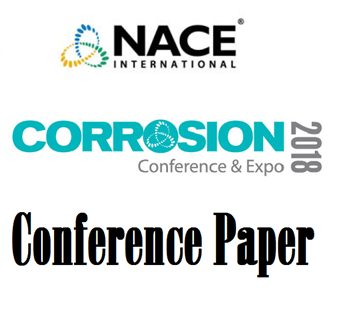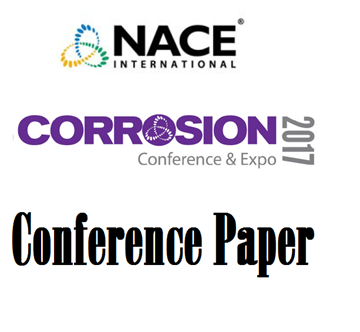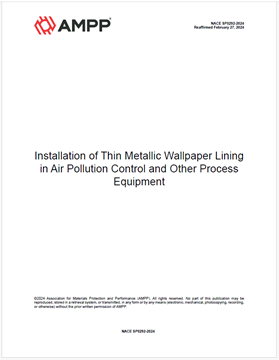Search
Products tagged with 'titanium'
View as
Sort by
Display
per page
51318-11612-Electrochemical behavior of titanium and titanium nitride monolithic and layered thin films
Product Number:
51318-11612-SG
Publication Date:
2018
$20.00
51318-11677-Novel Titanium-based Composites: Processing-Microstructure-Corrosion Interrelationships
Product Number:
51318-11677-SG
Publication Date:
2018
$20.00
98417 TITANIUM AS REACTOR MATERIAL FOR SCWO APPLICATIONS.FIRST EXPERIMENTAL RESULTS
Product Number:
51300-98417-SG
ISBN:
98417 1998 CP
Publication Date:
1998
$20.00
AMPP TR21522-2024, Corrosion Testing for Additive Manufacturing
Product Number:
AMPP TR21522-2024
Publication Date:
2024
$109.00
AMPP TR21524-2023, Commentary on Standards Development for Selection and Qualification of HSC-Resistant Materials in Subsea Service with Cathodic Protection
Product Number:
AMPP TR21524-2023
Publication Date:
2023
$109.00
Effective Inorganic Salt Corrosion Inhibitors for Titanium Components Exposed to Dilute Hydrofluoric Acid Well Stimulation Fluids
Product Number:
51317--8978-SG
ISBN:
8978 2017 CP
Publication Date:
2017
$20.00
Influence Of Ternary Additives On Electrochemical And Mechanical Behaviors Of Electroless Ni-P Coatings
Product Number:
51322-17841-SG
Publication Date:
2022
$20.00
Materials and Corrosion Risk Mitigation Associated with Flowback of Acid Stimulation Fluids
Product Number:
51317--8917-SG
ISBN:
8917 2017 CP
Publication Date:
2017
$20.00
Mercury Liquid Metal Embrittlement of ASTM Grade 29 Titanium
Product Number:
51316-7556-SG
ISBN:
7556 2016 CP
Publication Date:
2016
$20.00
NACE SP0292-2018, Installation of Thin Metallic Wallpaper Lining in Air Pollution Control and Other Process Equipment
Product Number:
21054-SG
Publication Date:
2018
$179.00
NACE SP0292-2024, Installation of Thin Metallic Wallpaper Lining in Air Pollution Control and Other Process Equipment
Product Number:
NACE SP0292-2024
$109.00
Recent Advances On The Influence Of Microstructural Characteristics On Corrosion Resistance In H2SO4 Of Anodized Titanium
Product Number:
51322-17589-SG
Publication Date:
2022
$20.00












